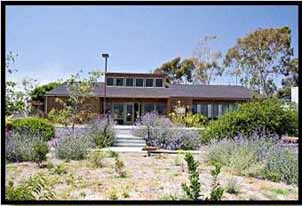The Big River Elementary School
Needles, CA
The newly constructed school needed a wastewater system solution that would be appropriate for the harsh desert weather conditions and its remote location. Integrated Water Services, Inc. was chosen to construct the treatment system, which included a state of the art denitrification technology to meet the regulatory requirements of the environmentally sensitive area.
The 7,000 gpd onsite wastewater treatment system was designed by Kevin Poffenbarger, PE of EPD Consultants and includes the SeptiTech Recirculating Media Filtration Unit in combination with the ENR,LLC denitrification upflow filter.
During the design phase, EPD was looking for denitrification solution that could comfortably meet the 10 mg/l limit, was cost effective, required minimal maintenance, and was able to handle fluctuating nitrate loading. EPD selected the ENR Upflow filter, which was configured in two, 12,000 gallon Xerxes tanks and installed below grade.
The IWS scope of work for the overall project included installing: 15,000 gallon equalization tank, two SeptiTech M3000 processor tanks configured in Containment Solution tanks, an Alkalinity and Carbon Feed System, UV Disinfection, and 18,000 ft2 of Geoflow drip dispersal.
All the treatment system components were installed below grade to avoid the extreme temperature swings that impact the desert region.
The overall construction schedule was 8 weeks and included work during the early summer months where temperatures reached over 110 degrees during the day.




